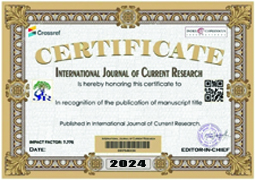Common bean (Phaseolus vulgaris L.) is one of the most important grain legumes in the word in term of total production and nutrition. It was domesticated in America, and spread around the world. This crop is cultivated in a very large part of Africa, extent in 30sub-Saharan Africa countries. But only a fraction of its accessions has been characterized based on origin, morphometric traits, agronomic performance and seed composition. This objective of this study is to characterize morphologically and agronomically the Common bean accessions from DR-Congo germplasm, highlight the level of high variability in the Common bean gene pool of the Country.81,11% of Common bean accessions from the germplasm had losangic leaves and 18,99% triangular leaves.50% of plants had white color of flowers, 35,56% of pink color and 14,44% of rosatre white color. Pods colors frequencies were 85,56% yellow, 6,67% red, 6,67% green and 1,11% crimpson.31,11% of accessions had seeds with white color, 21,11% of brown color, 18,88% of yellow color, 6,67% of red color, 3,33% of brown chestnut color, 2,22% of striated color, 2,22% of cream-coloured color, 2,22% of chocolate striated cream-coloured, 2,22% of red mottled color and 9,99% various the accessions colors (1,11% pink, 1,11% red dark, 1,11% red checkmate, 1,11% red striated white, 1,11% yellow checkmate, 1,11% grey sink, 1,11% grey striped, 1,11% light crimson and 1,11% crimson with white points). The stems colors were 78,89% green, 20% anthocyanin and 1,11% red. There were significant differences among accessions for all the quantitative traits analyzed. In this germplasm, 18,89% of the accessions were high than 1 m tall, 20% between 1 m to 0.50 m tall and 61,11% less than 0.50 m tall. Plant height and stem diameter were negatively correlated, while plant height and number of leaves per plant were positively and significantly correlated to each other. A negative correlation was observed between leaflet length and plant height. Grain yields were highly and significantly correlated to the number of pods and seeds per plant. Based on grain yield resistance over the two years of trials at the location, thirty three accessions have been identified as adapted to the local conditions of the main growing common bean region in the DR-Congo.





